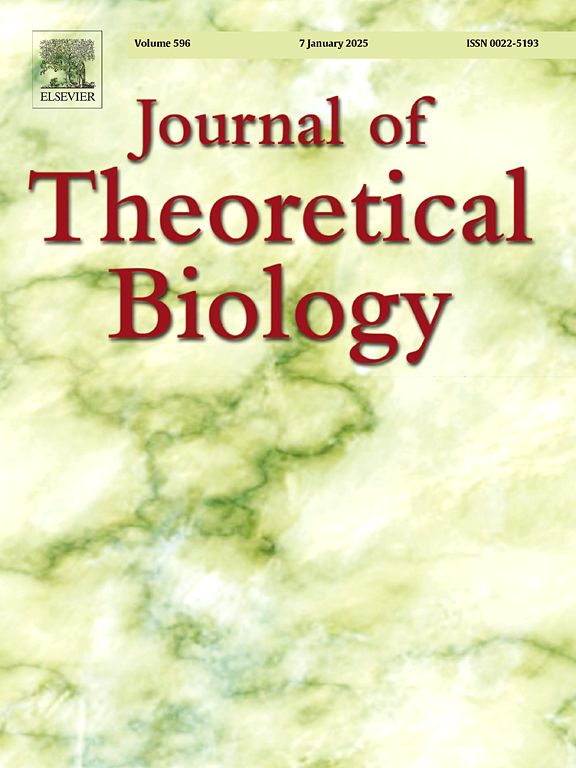从具有细胞可塑性的随机模型中的相对比例推断绝对细胞数
IF 1.9
4区 数学
Q2 BIOLOGY
引用次数: 0
摘要
定量细胞群的动态变化对于全面了解细胞增殖、损伤修复和疾病进展等生物过程至关重要。然而,与直接测量特定亚群的绝对细胞数相比,相对比例数据显示出更高的可重复性,并产生更稳定、可靠的结果。因此,从相对比例数据推断绝对细胞数可能为有效预测细胞群体大小的变化提供了一种新的方法。为了解决这个问题,我们使用从随机细胞塑性模型中导出的矩方程建立了细胞比例和种群大小之间的两个数学映射。值得注意的是,我们的研究结果表明,其中一种映射不需要对初始种群大小的先验知识,这突出了将方差信息纳入细胞比例数据的价值。我们从多个角度评估了我们的方法的稳健性,并将其应用于细胞可塑性模型背景下的各种生物机制。这些方法有助于减轻与通过实验技术直接测量绝对细胞计数相关的限制。此外,它们为利用细胞群体的随机动力学来量化系统内不同生物量之间的相互作用提供了新的见解。本文章由计算机程序翻译,如有差异,请以英文原文为准。
Inferring absolute cell numbers from relative proportion in stochastic models with cell plasticity
Quantifying dynamic changes in cell populations is crucial for a comprehensive understanding of biological processes such as cell proliferation, injury repair, and disease progression. However, compared to directly measuring the absolute cell numbers of specific subpopulations, relative proportion data demonstrate greater reproducibility and yield more stable, reliable outcomes. Therefore, inferring absolute cell numbers from relative proportion data may present a novel approach for effectively predicting changes in cell population sizes. To address this, we establish two mathematical mappings between cell proportions and population sizes using moment equations derived from stochastic cell-plasticity models. Notably, our findings indicate that one of these mappings does not require prior knowledge of the initial population size, highlighting the value of incorporating variance information into cell proportion data. We evaluated the robustness of our methods from multiple perspectives and extended their application to various biological mechanisms within the context of cell plasticity models. These methods help mitigate the limitations associated with the direct measurement of absolute cell counts through experimental techniques. Moreover, they provide new insights into leveraging the stochastic dynamics of cell populations to quantify interactions between different biomasses within the system.
求助全文
通过发布文献求助,成功后即可免费获取论文全文。
去求助
来源期刊
CiteScore
4.20
自引率
5.00%
发文量
218
审稿时长
51 days
期刊介绍:
The Journal of Theoretical Biology is the leading forum for theoretical perspectives that give insight into biological processes. It covers a very wide range of topics and is of interest to biologists in many areas of research, including:
• Brain and Neuroscience
• Cancer Growth and Treatment
• Cell Biology
• Developmental Biology
• Ecology
• Evolution
• Immunology,
• Infectious and non-infectious Diseases,
• Mathematical, Computational, Biophysical and Statistical Modeling
• Microbiology, Molecular Biology, and Biochemistry
• Networks and Complex Systems
• Physiology
• Pharmacodynamics
• Animal Behavior and Game Theory
Acceptable papers are those that bear significant importance on the biology per se being presented, and not on the mathematical analysis. Papers that include some data or experimental material bearing on theory will be considered, including those that contain comparative study, statistical data analysis, mathematical proof, computer simulations, experiments, field observations, or even philosophical arguments, which are all methods to support or reject theoretical ideas. However, there should be a concerted effort to make papers intelligible to biologists in the chosen field.

 求助内容:
求助内容: 应助结果提醒方式:
应助结果提醒方式:


